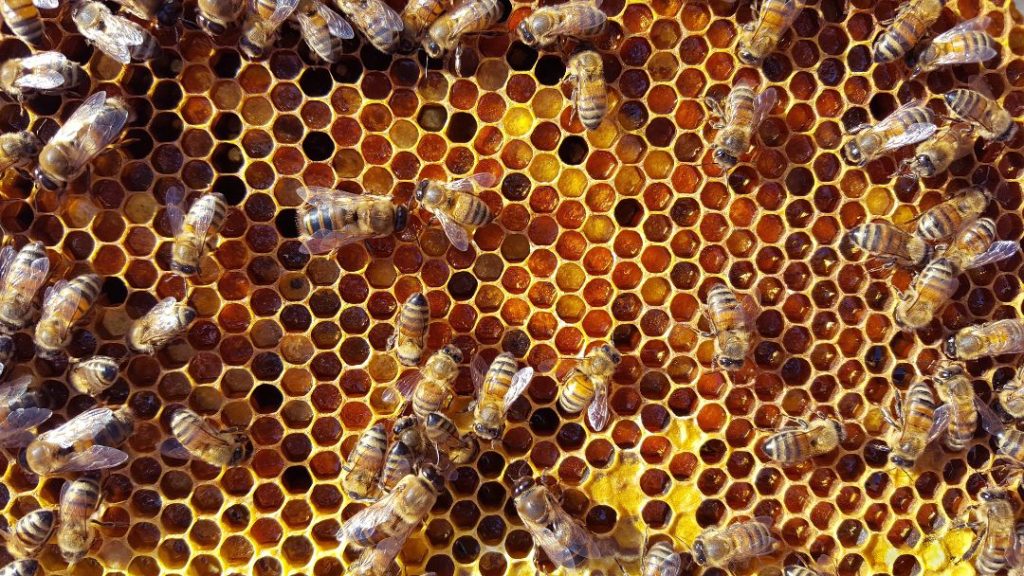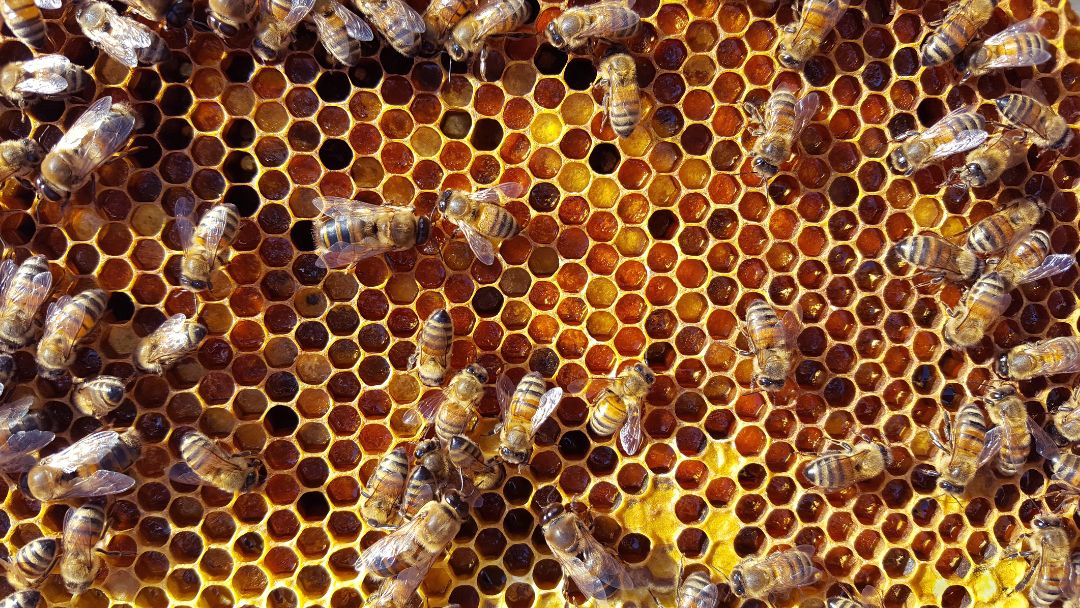How Often Do Bee Hives Produce Honey: Honey Production Cycle
Bee hives produce honey on a regular basis, usually once or twice a year. In the warmer months, bees gather nectar and convert it into honey through a process of regurgitation and evaporation.
The creation of honey depends on factors such as the availability of nectar-producing plants and the strength of the bee colony. Beekeepers may also intervene to encourage honey production by providing additional food sources or removing surplus honey.
The frequency of honey production can vary based on these factors, but it is typically a recurring process for active and healthy beehives.
Understanding The Honey Bee Lifecycle
Beekeeping is a fascinating endeavor that revolves around the intricate life cycle of honey bees. To truly appreciate the process of honey production, it is essential to delve into the different stages of a honey bee’s life.
From birth to death, every bee in the hive plays a vital role in ensuring the survival and productivity of the colony. By understanding the honey bee lifecycle, beekeepers can better care for their hives and optimize honey production.
Let’s explore the various stages in a honey bee’s life and the key responsibilities of each bee within the hive.
Overview Of The Different Stages In A Honey Bee’s Life
Honey bees go through four distinct stages in their life cycle: egg, larva, pupa, and adult.
These stages are often referred to as complete metamorphosis, similar to butterflies and moths. Understanding each stage can provide valuable insights into the timing and frequency of honey production.
Key Roles And Responsibilities Of Different Bees In The Hive
| Bee Type | Role |
|---|---|
| Queen Bee | The queen bee is the mother of the colony, responsible for laying eggs. She can lay up to 2,000 eggs per day under favorable conditions. Without a prolific queen, the hive’s honey production may be compromised. |
| Worker Bees | Worker bees are female bees who perform various tasks within the hive. Their responsibilities include cleaning, nursing the brood, collecting nectar and pollen, building and repairing the honeycomb, and guarding the hive. These diligent bees are crucial for honey production as they are the ones responsible for the majority of the work. |
| Drone Bees | Unlike worker bees, drone bees are male and do not possess stingers. Their primary purpose is to mate with queen bees from other colonies. Once their role is fulfilled, they are expelled from the hive by worker bees. Although drone bees do not contribute directly to honey production, their presence is essential for maintaining genetic diversity within the honey bee population. |
Each bee type has its own unique set of tasks and responsibilities. When all bees work harmoniously together, the hive thrives and honey production flourishes.
Beekeepers must understand the importance of each bee’s contribution and ensure the hive remains strong and healthy.

Nectar Collection: Fueling Honey Production
Bee hives are incredible marvels of nature, bustling with activity as worker bees tirelessly go about their tasks. At the heart of honey production lies the process of nectar collection.
Understanding the intricacies of this process is key to comprehending how often bee hives produce honey.
Exploring The Process Of Nectar Collection By Worker Bees
The process of nectar collection begins with the worker bees venturing out in search of the sweet nectar from flowers.
Bees are attracted to the brightly colored petals and fragrant aromas of flowers, and they extract the nectar using their long and specialized tongue called a proboscis.
The tiny creatures have incredibly acute senses and can detect sugar concentrations, ensuring that they collect nectar from the most suitable sources.
Once a worker bee finds a flower with an ample supply of nectar, it extends its proboscis and sips the sugary fluid, storing it in a specialized honey stomach separate from its regular digestive system.
The bee returns to the hive, where it regurgitates the nectar into the mouth of another worker bee. This process is repeated several times until the nectar is gradually transformed into honey.
Factors Influencing Nectar Availability And Collection Frequency
The availability of nectar and the frequency of collection are influenced by various factors, ensuring bee hives produce honey consistently. These factors include:
- Seasonal Changes: Nectar flow is largely dependent on the seasons as different plants bloom at different times. Spring and summer are typically the peak seasons for nectar availability, offering an abundance of flowers for bees to gather nectar from.
- Weather Conditions: Temperature, humidity, and rainfall play crucial roles in nectar production. Bees are more active during warmer days, and rain can dilute nectar, making it less appealing to collect.
- Geographical Location: The type of flora in the local area greatly affects the nectar collection potential. Regions with diverse vegetation offer a broader range of nectar sources for bees to exploit.
- Bee Population: The number of worker bees in a hive directly influences the efficiency of nectar collection. Larger colonies with a higher population of foraging bees can collect more nectar in a shorter period.
- Competition from Other Insects: Bees have to compete with other insects, like butterflies and beetles, for nectar. This competition can reduce the amount of nectar available for bees to collect.
By understanding the process of nectar collection and the factors that influence it, we gain a clearer understanding of how frequently bee hives produce honey.
With their efficient and organized systems, bees ensure that there is a continuous supply of honey to sustain the hive and provide us with the golden nectar we all enjoy.
The Hive As A Honey Factory
When it comes to honey production, bee hives are essentially nature’s very own factories.
Within the buzzing world of a hive, thousands of worker bees, drones, and a queen bee collaborate in a fascinating and intricate process to ensure the production of the sweet golden nectar that we all love, honey.
Inside Look At The Honey Production Process Within The Hive
Within a beehive, the production of honey is a complex and highly organized process. To better understand this process, we need to dive into the various roles played by different members of the hive.
The Queen Bee – The Heart Of The Hive:
At the center of every thriving bee colony is the queen bee. She is the heart and soul of the hive, responsible for producing eggs that will eventually become worker bees, drones, and future queens.
Queen bees have a fascinating ability to choose the type of eggs they lay. When it comes to honey production, the queen bee lays unfertilized eggs, which then develop into drones. These drones have a unique purpose that we will explore in the next section.
The Collaboration Between Drones And Workers:
Drones are the male bees, and their primary purpose is to mate with the queen. However, they also play an important role in the honey production process.
After the queen bee lays unfertilized eggs, the drones hatch and grow to maturity. Once mature, they venture out of the hive and mate with virgin queens from other colonies. This process contributes to maintaining genetic diversity within the bee population.
Now, let’s delve into the crucial role of worker bees, the unsung heroes of honey production.
The Worker Bees – The Honey Producers:
Worker bees are female bees and make up the majority of the hive’s population. They are responsible for gathering nectar, pollen, and propolis, vital ingredients in the honey-making process.
When a worker bee finds a rich source of nectar, it uses its long proboscis to suck up the sweet liquid and stores it in a special honey stomach. Interestingly, this honey stomach is separate from the bee’s regular stomach and is exclusively dedicated to storing nectar.
Back at the hive, the worker bee regurgitates the nectar and passes it to other worker bees through a process called trophallaxis. This regurgitation happens multiple times, allowing enzymes to break down complex sugars into simpler forms.
Once the nectar has been broken down and partially dehydrated, the worker bees place it into the hexagonal honeycomb cells within the hive.
But the process is not yet complete. The worker bees fan their wings to evaporate excess water from the nectar, reducing its moisture content to about 17-18%. This reduction in water content is crucial in preventing fermentation and ensuring the concentration necessary for honey storage.
Finally, the honey-filled cells are sealed with beeswax, creating a protective barrier to keep the honey fresh and free from contaminants.
The Continuous Cycle Of Honey Production:
As the bees consume honey for energy, they constantly replenish it by collecting nectar from flowers. This continuous cycle of nectar collection, honey production, and consumption ensures a steady supply of honey within the hive.
The honey production process within a beehive is truly remarkable. The collaboration between worker bees, drones, and the queen bee results in the creation of this natural and nutritious sweetener.
Understanding the intricate processes that occur within a bee hive allows us to appreciate the efforts of these tiny creatures and the wonders of nature’s very own honey factory.
Factors Affecting Honey Production Frequency
When it comes to honey production, how often bee hives produce honey can depend on several factors. Examining these factors is crucial to understanding the frequency and productivity of honey production.
Some of the key factors affecting honey production frequency include environmental conditions and seasonal variations.
Examining Environmental Factors And Their Impact On Honey Production
The environment plays a vital role in the honey production process. Bees rely on various environmental factors to forage for nectar, produce honey, and maintain their hives. Let’s take a closer look at these factors:
- Floral availability: The availability of flowering plants greatly influences honey production. Bees require a diverse range of flowers to gather nectar from. Areas with abundant floral resources can result in more frequent honey production.
- Weather conditions: Weather conditions such as temperature, rainfall, and humidity can significantly impact the behavior and productivity of bees. Favorable weather conditions, such as moderate temperatures and adequate rainfall, encourage foraging activity and honey production. On the other hand, extreme weather conditions like prolonged drought or heavy rainfall can reduce honey production.
- Predators and pests: Bees face numerous threats from predators and pests, including wasps, ants, mites, and birds. Increased predation pressure can disrupt the normal activities of bees, leading to reduced honey production.
- Environmental pollutants: Pollutants such as pesticides, pollutants, and chemical residues in the environment can have detrimental effects on bees and their honey production. Exposure to these substances can weaken bee colonies and impact their ability to produce honey.
- Habitat suitability: The availability of suitable and secure habitats is vital for healthy bee colonies. A well-structured hive, with adequate space and protection from external threats, can contribute to better honey production.
Seasonal Variations And Their Influence On The Productivity Of Bee Hives
Seasonal variations have a significant impact on the productivity of bee hives and their honey production. Bees exhibit different behaviors and priorities throughout the seasons. Let’s explore the seasonal variations that affect honey production:
- Spring: Spring is a crucial period for honey production as it marks the beginning of the foraging season. The availability of early spring flowers provides bees with ample nectar, leading to increased honey production.
- Summer: Summer is typically the peak season for honey production. The availability of diverse flowering plants, longer daylight hours, and warmer temperatures favor increased foraging activity, resulting in higher honey production.
- Fall: During the fall season, bee colonies focus on preparing for winter. Bees work diligently to store enough honey reserves to sustain the colony during the colder months. Therefore, honey production may decline during this time.
- Winter: Winter is the most challenging season for honey production. Bees enter a state of semi-dormancy, relying on their stored honey reserves for survival. As a result, honey production is minimal or nonexistent during winter.
Beekeeper Intervention: Maximizing Honey Harvests
Beekeepers play a crucial role in maximizing honey harvests and ensuring that bee hives produce an abundant supply of this golden nectar. With their expertise and intervention, they can implement strategies to promote and optimize honey yields.
By understanding the ways in which beekeepers can enhance honey production, we can appreciate the hard work they put into maintaining healthy hives and extracting the sweet rewards nature provides.
Best Practices For Promoting And Optimizing Honey Yields
To achieve the best possible honey production, beekeepers follow a set of best practices aimed at promoting and optimizing honey yields.
These practices involve various aspects of beekeeping, from hive management to maintaining a favorable environment for the bees. Here are some key strategies that beekeepers employ:
- Regular hive inspections: Beekeepers conduct regular inspections of their hives to assess the overall health and productivity of the colony. By monitoring the condition of the queen, the number of worker bees, and the amount of stored honey, they can determine if any intervention is required to enhance honey production.
- Hive maintenance and cleaning: Keeping the hives clean and well-maintained is essential for honey production. Beekeepers ensure that hives have enough space for honey storage by adding or removing frames as needed. They also take measures to prevent the spread of diseases and parasites that may affect the bees and compromise honey production.
- Promoting a strong colony: A healthy and thriving colony is more likely to produce greater quantities of honey. Beekeepers take steps to ensure the bees have access to a diverse and abundant source of nectar and pollen by strategically placing the hives near flowering plants and providing supplementary feeding when necessary.
- Supering: Supering is a technique where beekeepers add additional boxes, known as supers, to the hive to provide extra space for honey storage. This practice encourages the bees to continue producing honey without feeling crowded. Beekeepers carefully time the addition of supers to coincide with periods of nectar flow, maximizing the honey yield.
- Minimizing stress factors: Beekeepers aim to reduce stress factors that may negatively impact honey production. They avoid excessive hive manipulation, limit the use of chemicals, and provide adequate ventilation to ensure the bees’ well-being. By keeping their colonies as stress-free as possible, beekeepers promote a more productive and healthy hive.
Overall, the role of beekeepers in enhancing honey production cannot be overstated. With their knowledge and careful management, they are able to create the ideal conditions for honeybees to thrive, resulting in bountiful honey harvests.
By adopting these best practices, beekeepers contribute not only to the success of their own operations but also to the preservation of these incredible pollinators and the vital ecosystem services they provide.
Conclusion
To summarize, bee hives produce honey at different frequencies depending on various factors such as climate, nectar availability, and bee population. While established colonies can produce honey annually, it can take up to two years for new colonies to start producing.
Beekeepers play a crucial role in promoting honey production through proper hive maintenance and providing the necessary resources for bees to thrive.
Understanding the process and the needs of bee hives is essential in ensuring sustainable honey production and supporting our ecosystem.


